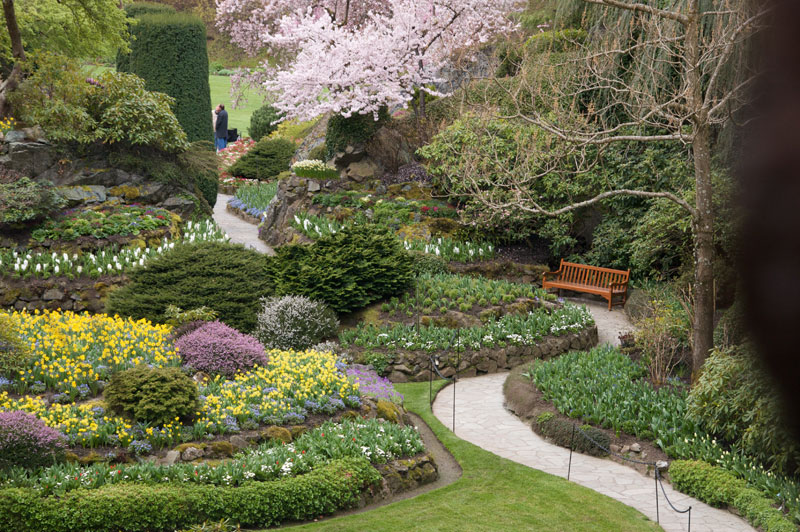If you have been able to find this page, hidden somewhere in the obscure ethers of the internet, you’ve probably have been searching for something to enhance your ability to either design gardens or understand what garden design is all about. You might have a passing interest in designing a garden for yourself, or for another, you may be a design professional looking for a better way to do what you do, or you may even be asking yourself: Why would I want to design a garden like a landscape architect?
Landscape Architecture as a Profession
Landscape Architecture as a profession, is relatively new. It was borne of our need as an evolving society, in the mid-19th century, to create environments for the urban public, which were both spiritually and emotionally uplifting.
It was during this time that Frederick Law Olmsted (the designer in charge of Central Park in New York City) coined the name and invented the profession of landscape architecture. Olmsted was a man of vision, but more importantly, he was a student of nature, always inspired and guided by what he saw in the vistas and beauty of wild America.
The Healing Role of Landscape Architecture
With the Tragedy of September 11, so close at hand it was difficult to come up with an appropriate article about landscape design this month. And yet I know, it is important for all of us, as Americans, to continue our lives, as unaffected as possible, by this horrendous act of terror. We must not only continue, but move forward with a strength that we have not called upon for several generations.
My answer came in the way of an e-mail from the president of ASLA (the American Society of Landscape Architects) of which I am a member. He was in our society’s headquarters in New York, across the street from the World Trade Center.
Plants Have Personalities Too
What is the one thing we try to remember when we first meet someone? Their name, of course. That is the first piece of information we need to commit to memory before we start collecting information about that person. Once we remember their name, we can remember their face, and all the other things that characterize that person, their physical description, personality, behavioral traits etc.
In this respect, plants are no different. Once we have committed the name of a plant to memory, we have a place in our memory, to start cataloguing information about that plant. Plants are diverse, and vary not only because of species differentiation, but because of cultivar differences and environmental conditions. All plants are not the same, and their beauty is in their differences.
Designing Outdoor Spaces
The most important function of a well-designed landscape, is to create outdoor spaces – whether it be an entry courtyard, a sitting area in the woods, a patio, or perhaps a woodland garden. Ideally, the landscape should be an extension of your home, enticing you into it by stimulating your senses, much like a well-decorated living room, with a comfortable couch and beautiful fireplace.
Planning Your Perfect Landscape
Landscaping is often a lower priority when building a new home, because lets’ face it, you do not have to have a beautiful landscape to cook your meals, keep you dry and give you a good nights rest. For that, you need a functional kitchen, a good roof and a bedroom.
Landscaping is primarily an aesthetic consideration. It appeals to our sense of beauty and refinement, much like a fine wine adds to an elegant, romantic dinner. We do not have to have it to survive, but it certainly can add to our enjoyment and to the quality of life that we are living.
Intuitive Landscape Design
The difference between an uninspiring landscape, and one that takes your breath away, is in the intangibles, those things that defy reason – a little accent here, a whimsical addition there. An inspired landscape design is borne of creative fancy – an intuitive mix, integrating function (a logical process) and feelings (an intuitive process).
The logical process is about information: gathering data from site conditions; circulation needs; solar orientation; soils; slopes; plant selection; and scanning your memories, for a sense of what you have liked and disliked in the past.
Site Planning
The Benefits of doing it right
Your home should reflect the dynamics of the site that you chose, and the site should be amenable to the type of home you decide to build. What does this really mean? It means that ideally a site should be chosen first, and then a house plan should be developed, considering all of the special nuances of the site. If you already have a house plan, a site should be selected that will complement and enhance it. The house should be a perfect “fit” for the site.
The Art of Landscape Design
A landscape architect approaches residential design, in much the same way as an artist approaches the commission of a portrait. He, like the artist, must get to know the subject intimately before the design process can begin. Much of the information he needs will come from the client, and the rest from studying the site itself with all its nuances, and unique opportunities. A guiding premise I use to help maintain the proper perspective and gauge how successful I am in any design endeavor is the following statement:
